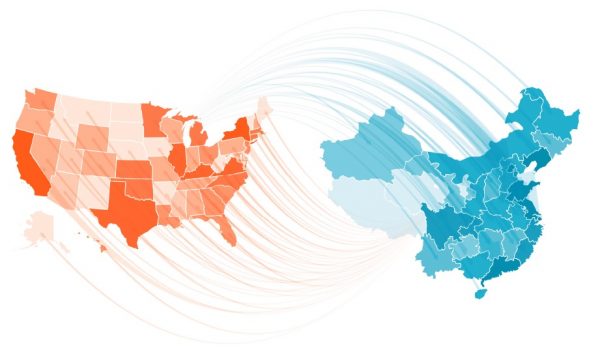Two-Way Street: 2017 Update
In recent years, U.S.-China foreign direct investment has evolved into a two-way street, with combined annual investment passing $60 billion in 2016.
Foreign Direct Investment (FDI) flows are an increasingly important dimension of U.S.-China economic relations. In recent years, U.S.-China FDI has evolved into a two-way street, with combined annual investment passing $60 billion in 2016.
There is still significant room for growth, but recent political developments are changing the outlook. In the United States, the rapid increase in Chinese investment has rekindled concerns about the national security and economic implications of foreign acquisitions. In China, Beijing has tightened administrative controls on capital outflows and is promising fairer treatment to foreign firms in an attempt to reverse slowing inflows of FDI.
As part of the U.S.-China FDI Project, the National Committee on U.S.-China Relations and the Rhodium Group jointly release the 2017 update to our “Two-Way Street” report, which reviews last year’s aggregate FDI trends, breaks down bilateral flows sector by sector, and discusses the outlook and policy agenda.
Among our key findings are:
- US-China two-way FDI reached an all-time high in 2016, elevating the importance of this facet of the bilateral economic relationship, and generating a new level of debate about the consequences.
- Two-way flows passed $60 billion in 2016, more than any other year in history.
- The deepening of FDI ties is even more meaningful in light of slower growth in other long-standing elements of the bilateral relationship including trade and Chinese purchases of US government securities.
- The growth in two-way flows was driven entirely by rapid expansion of China’s outbound investment: US FDI in China was essentially flat
For more background on the project and an interactive web application to explore the latest data, please visit the website of the US-China FDI Project. You can learn more here about our 2016 update.